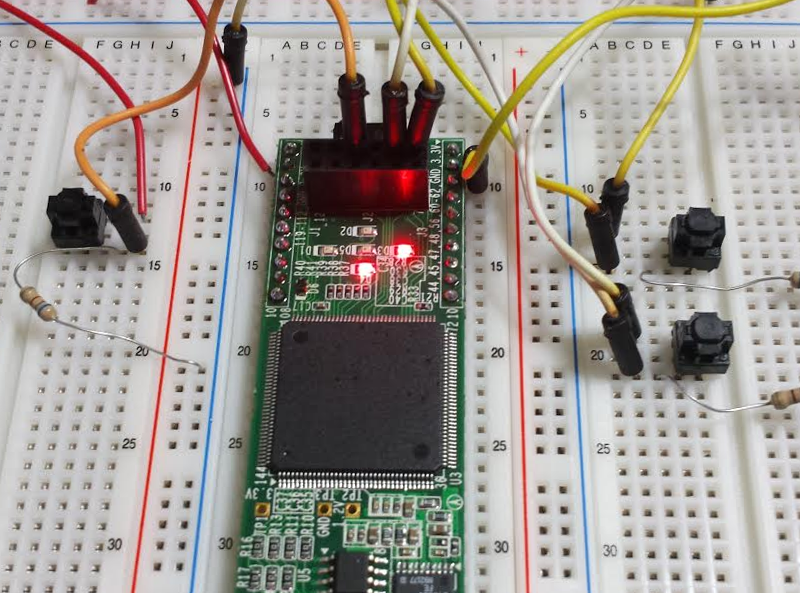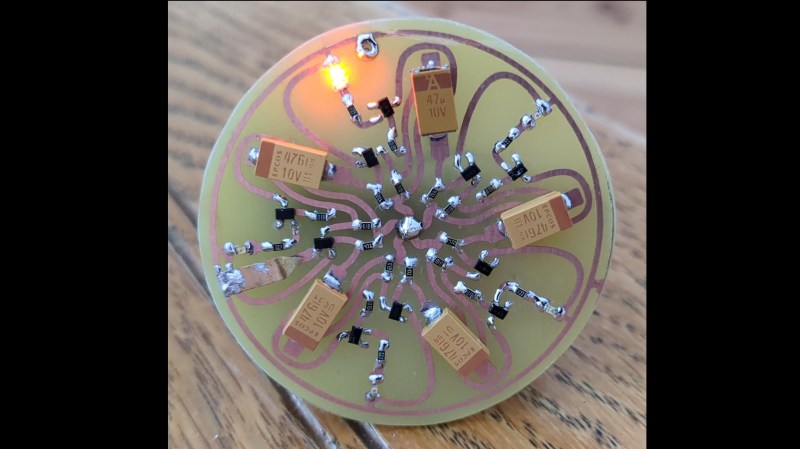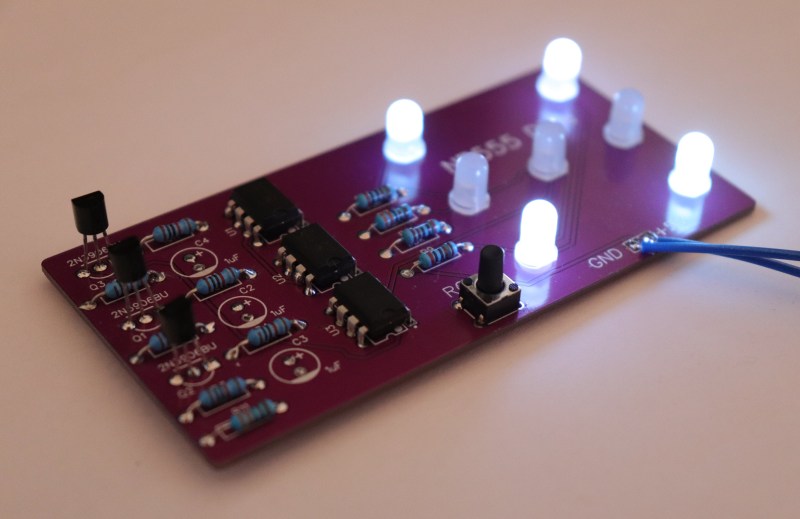Weird Things To Do With FPGAs

There’s an old joke about how can you find the height of a building using a barometer. One of the punchlines is to drop the barometer from the roof and …read more Continue reading Weird Things To Do With FPGAs
Collaborate Disseminate

There’s an old joke about how can you find the height of a building using a barometer. One of the punchlines is to drop the barometer from the roof and …read more Continue reading Weird Things To Do With FPGAs

[michimartini] over on Hackaday.io loves playing with multivibrator circuits, and has come across a simple example of a ring oscillator. This is a discrete transistor RC-delay design utilizing five identical …read more Continue reading PentaBlinky – When One LED Is Not Blinky Enough

It has become a bit of a running joke in the Hackaday community to suggest that a project could or should have been done with a 555 timer. [Tim] has …read more Continue reading NE555-Based Electronic Dice
It’s often said that if something is worth doing it’s worth doing right, or maybe even worth overdoing. This is clearly a concept that [ANTALIFE] takes very seriously, as made abundantly clear by projects like the solar powered “beating” heart he made as a gift for his wife. What for most of us would have ended up being a junk bin build becomes a considerable engineering project in his hands, with a level of research and fine tuning that’s frankly staggering.
But [ANTALIFE] didn’t put this much thought into the device just for fun. He wants it to remain …read more
Most of us have been there. You build a device but realize you need two or more voltages. You could hook up multiple power supplies but that can be inconvenient and just not elegant. Alternatively, you can do something in the device itself to create the extra voltages starting with just one. When [Ken Shirriff] decapped an 8087 coprocessor to begin exploring it, he found it had that very problem. It needed: +5 V, a ground, and an additional -5 V.
His exploration starts with a smoking gun. After decapping the chip and counting out all the bond wires going …read more
Did you know you can build fundamental circuits using biological methods? These aren’t your average circuits, but they work just like common electrical components. We talk alot about normal silicon and copper circuits ‘roud here, but it’s time to get our hands wet and see what we can do with the power of life!
In 1703, Gottfried Wilhelm Leibniz published his Explication de l’Arithmétique Binaire (translated). Inspired by the I Ching, an ancient Chinese classic, Leibniz established that the principles of arithmetic and logic could be combined and represented by just 1s and 0s. Two hundred years later in …read more
![]() Continue reading Living Logic: Biological Circuits for the Electrically Minded
Continue reading Living Logic: Biological Circuits for the Electrically Minded
If you have ever worked with simple logic gates, there is a good chance that at some point you will have built a ring oscillator from a chain of inverters. With the addition of a resistor and a capacitor, you can easily make a square wave oscillator up into the megahertz range with standard logic chips.
[Afroman] received some rather special logic chips, from an unexpectedly named company, Potato Semiconductor. They specialise in making versions of common 74 series logic that smash the usual 100+ MHz barrier of the faster conventional 74 series chips, and extend their bandwidth up to …read more
![]() Continue reading Afroman Makes A UHF Oscillator From A Potato
Continue reading Afroman Makes A UHF Oscillator From A Potato
If you have ever worked with simple logic gates, there is a good chance that at some point you will have built a ring oscillator from a chain of inverters. With the addition of a resistor and a capacitor, you can easily make a square wave oscillator up into the megahertz range with standard logic chips.
[Afroman] received some rather special logic chips, from an unexpectedly named company, Potato Semiconductor. They specialise in making versions of common 74 series logic that smash the usual 100+ MHz barrier of the faster conventional 74 series chips, and extend their bandwidth up to …read more
![]() Continue reading Afroman Makes A UHF Oscillator From A Potato
Continue reading Afroman Makes A UHF Oscillator From A Potato